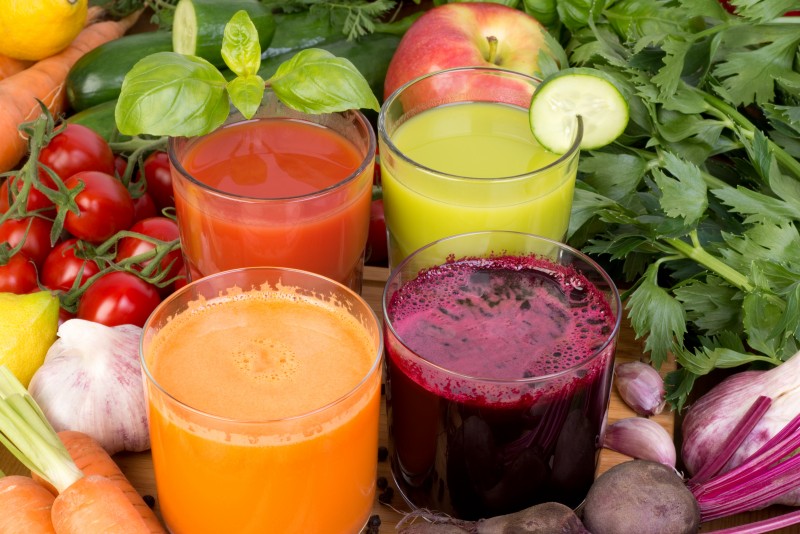Juicing for health
This blog will help you understand juicing for health reasons.
The term “juicing” simply means making home-made, fresh juice from raw fruits and vegetables and drinking them daily or even several times a day in order to achieve particular health benefits.
Juicing is a fun and delicious way to consume a wide range of nutrients, but the main aim is to help us heal. Juices can also be used to relieve migraines, promote sleep, improve skin, reduce bloating and improve digestive health, boost our immunity and even as an elixir of youth!
A few good reasons to inspire you to make your own juice:
- Juicing helps us absorb more nutrients from raw vegetables and fruits. This is important because many of us suffer from poor digestion due to years of poor food choices. Extracting the juice of raw food breaks down the fibre so valuable nutrients are more easily absorbed.
- Juicing helps to rebuild and nourish the lining of our intestinal mucosa, making it very useful for treating a wide range of digestive disorders and general inflammation. Juice also contains all the nutrients of fruits and vegetables, but minus the insoluble fibre, which for many can be hard to digest. However it still retains the soluble fibre that is fermented by our gut bacteria, which helps strengthen our immune system.
- Juicing helps us eat more fresh vegetables than we normally would. Many people already struggle to keep pace with the recommended 5 portions of fruit and vegetables a day. Juicing allows us to easily consume 8 or 10 portions – particularly from vegetables instead of fruits – which is healthier. Drinking a glass of juice is an easy way to bring the most valuable nutrients of vegetables directly into your body.
- Juicing allows us to vary our veggies. Many people eat the same vegetables in salads every day, which means we might be missing vital nutrients. But it’s very easy to make vegetable juice with vegetables that you wouldn’t normally eat. It is also an opportunity to discover new tastes and surprising combinations – such as apple and celery.
A few tips
- More vegetables, less fruit. Fruit juices are delicious, and fruit-vegetable combinations can sometimes be a good way to balance the slightly bitter taste of celery, spinach, cabbage leaves and kale. But if you are overweight, have hypertension, diabetes, or have immune issues it’s better to focus on organic vegetable juices, especially green vegetables (rather than fruits – which tend to be high in sugar).
- What’s great is that you can make juice with virtually any fruit and vegetable, except banana and avocado – which can only be blended.
- The great classics of “juicing” are cabbage leaves of all kinds (white, red, green, kale), broccoli, celery, turnips, cucumbers, fennel, parsley, endive, courgette, yellow peppers, red and green, peas, endive, tomatoes, carrots, beetroot, garlic and onion (onion in small quantities because it is not easy to digest).
- You can almost always add a piece of ginger and lemon juice or lime.
- To improve the taste, you can always add a drop of stevia, a natural sweetener that has a slightly licorice taste which goes quite well with vegetable juices.
- You’ll find that the combinations are endless and you’ll discover a variety of new tastes – generally very pleasant! In fact, juicing can be an adventure into a world of new taste sensations, along with a gift of nutrients for your body.
Getting organized
The only problem of “juicing” is that it requires organization. You need a special machine to get the full advantages. Juice doesn’t keep and oxidises if you don’t drink immediately. You can’t make one big batch and then drink it in small portions. Many people use a centrifuge, because it’s cheaper, but the disadvantage is that it doesn’t properly extract all the juice and pulp. A large portion of your fruits and vegetables then end up in the trash rather than in your glass.
The only really effective tool to make vegetable juice is with an extractor. It is much more expensive, but it delivers a lot more juice and nutrients. The pulp that comes out of an extractor is almost dry, there is nothing lost. Another advantage of the extractor is that the juice will keep for a day without oxidising.
Last tip
Begin by juicing the vegetables that you usually eat – then be adventurous! It is very important to listen to your body when making juice. Start with a juice at breakfast and then be aware of any digestive symptoms you might feel afterwards. Any discomfort means that you might be better switching one or more of the ingredients – keep experimenting. Other than that… keep your juices green!


No Comment